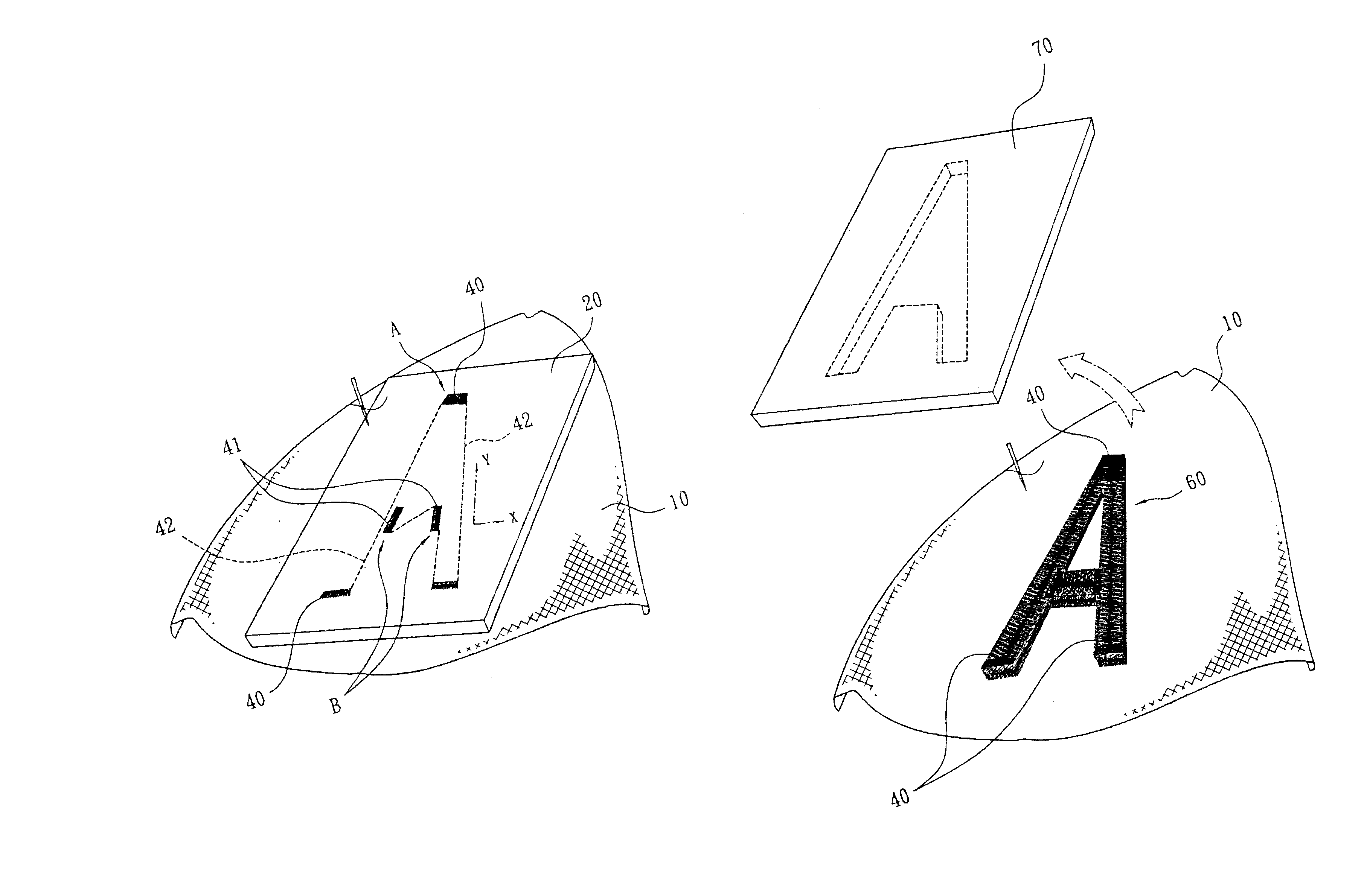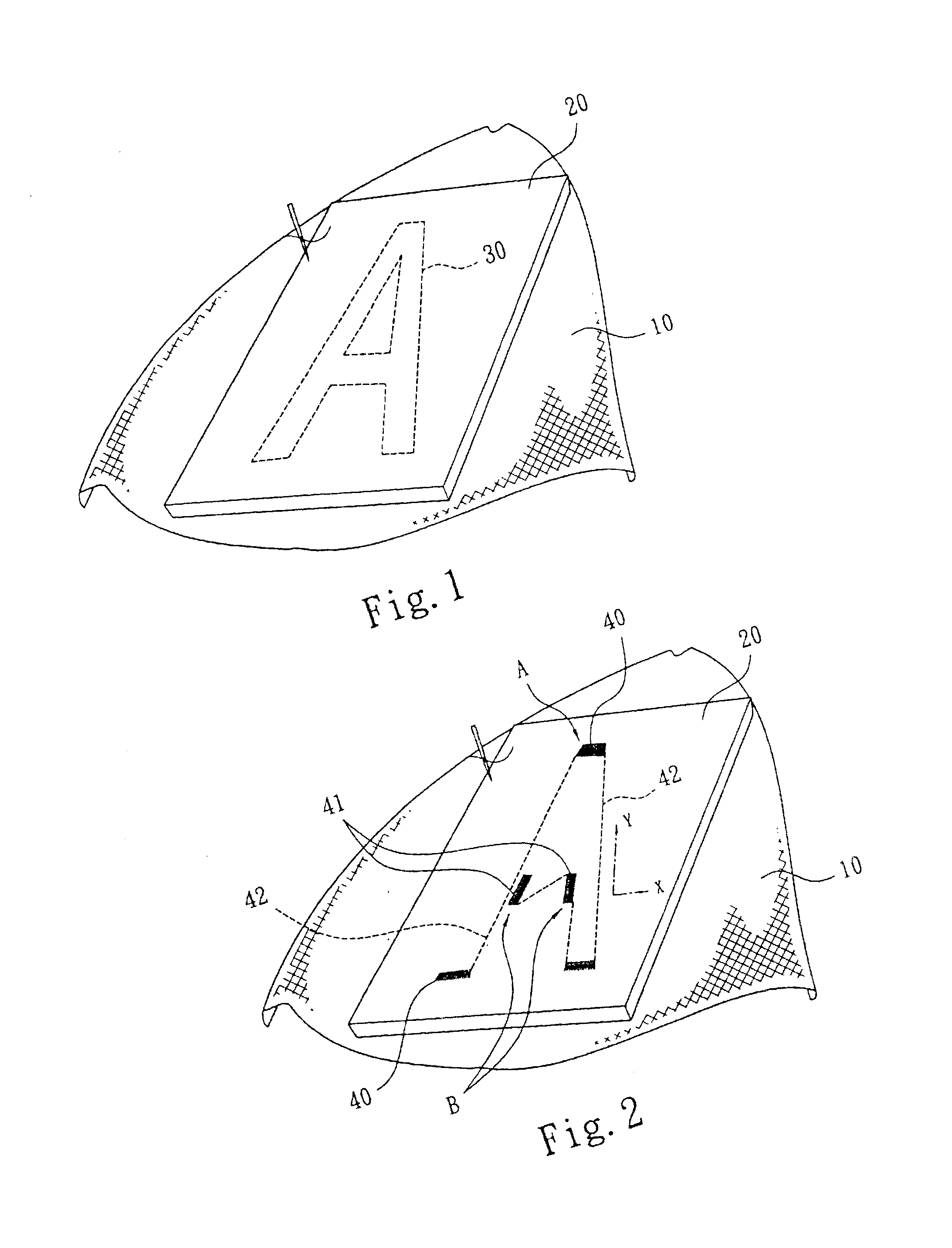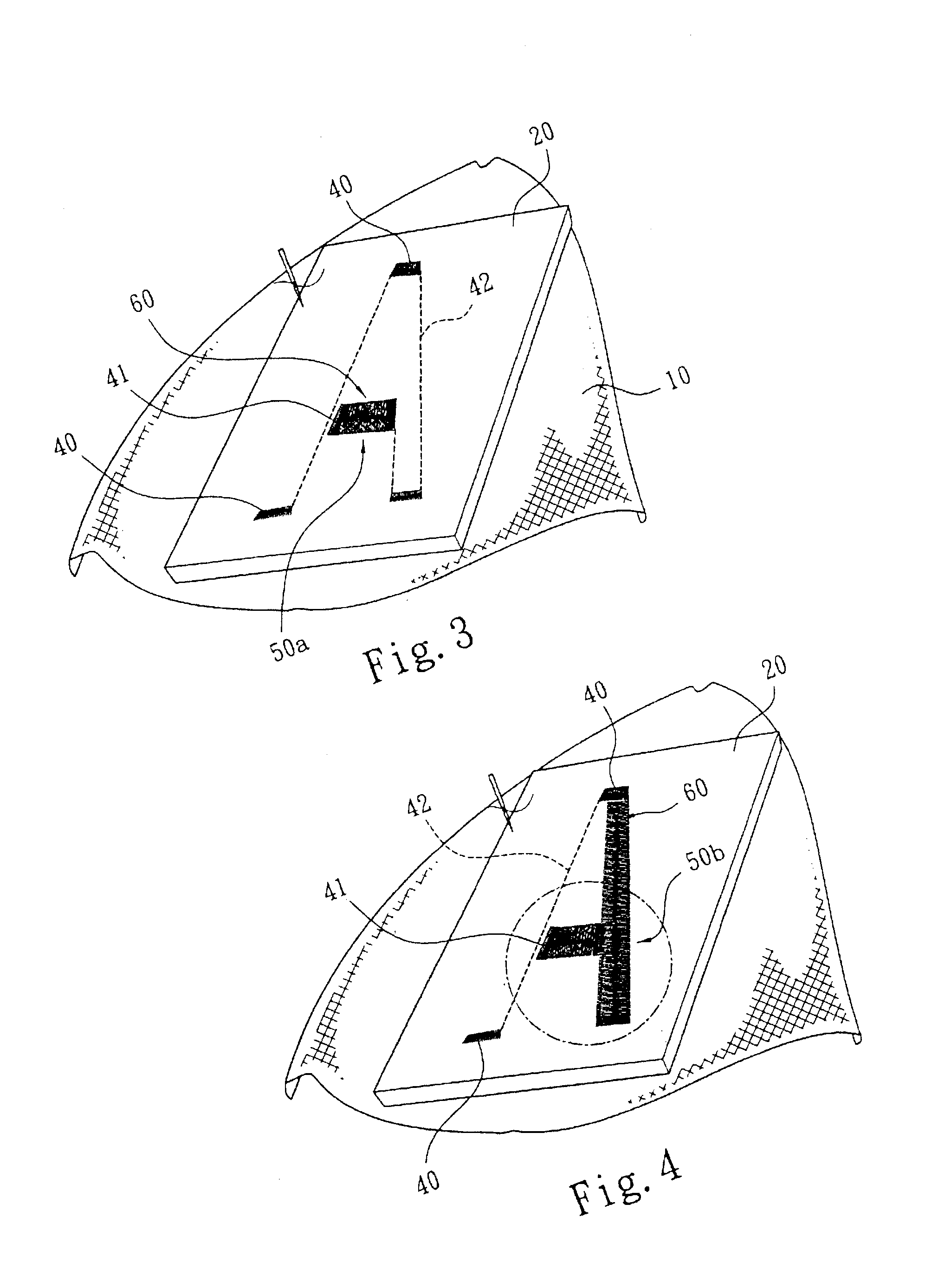Raised embroidery process
a technology of embroidery and embroidery thread, which is applied in the direction of embroidering machines, automatic machines, textiles and paper, etc., can solve the problems of time-consuming and cost-consuming embroidery process, inability to consider as ideal processes, and time-consuming consecutive interval perforations
- Summary
- Abstract
- Description
- Claims
- Application Information
AI Technical Summary
Benefits of technology
Problems solved by technology
Method used
Image
Examples
Embodiment Construction
Referring to FIGS. 1 to 6, the raised embroidery process according to the present invention can pass the whole embroidery fabric along with the filler through an oven conveyor for heating purposes. This process not only can be adapted to mass production, but also can evenly shrink the filler to achieve embroidery masterpieces. Besides, the pre-designed embroidery paths can spare the procedure of affixing the filler or pre-perforating densely on the background fabric. The present invention includes the following steps:A. placing a piece of filler 20 on an embroidering background fabric 20 such that the filler 20, having a size larger than that of the raised embroidery pattern, may cover the pre-determined embroidery pattern 30 (as shown in FIG. 1);B. conducting a supplementary embroidering procedure on the short sides A or wherever necessary (such as the area 41 where different directions of outmost surface embroidering threads of the 3D embroidery design being adjacent), i.e. sewing...
PUM
 Login to View More
Login to View More Abstract
Description
Claims
Application Information
 Login to View More
Login to View More - R&D
- Intellectual Property
- Life Sciences
- Materials
- Tech Scout
- Unparalleled Data Quality
- Higher Quality Content
- 60% Fewer Hallucinations
Browse by: Latest US Patents, China's latest patents, Technical Efficacy Thesaurus, Application Domain, Technology Topic, Popular Technical Reports.
© 2025 PatSnap. All rights reserved.Legal|Privacy policy|Modern Slavery Act Transparency Statement|Sitemap|About US| Contact US: help@patsnap.com



